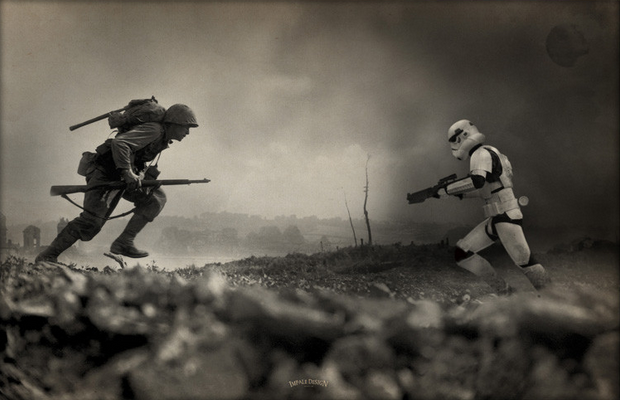I mean, what is the cut-off date?
Regency (the early 1800s) is self-explanatory. So is Ancient Rome, medieval Europe, the Tudors – all the stereotypical time periods one thinks of when someone mentions “historical fiction” are so far in the past
World War II is another obvious and popular time period. One of the first big WWII novels, “From Here to Eternity”, was written in 1951 by an author who was at Pearl Harbor, so though it appears on historical fiction lists it’s really just contemporary fiction from an earlier time.
But then consider Wouk’s “Winds of War”, written in 1971, less than 30 years after the end of WWII, is arguably more a war novel than a historical fiction novel, yet is described as a great work of historical fiction now.
To a history buff 30 years doesn’t seem like much but it still jarred me to realize that the Ramones first album (1975) came out only 30 years after World War II ended (1945).
By that logic, punk, which happened over 40 years ago(!), is now ripe fodder for historical fiction.
(Punk is closer in time to WWII than to 2021!)

via GIPHY
I’ve read some really good 1970s histfic lately. My choices reflect my love of pop culture: a fictional rock band, a fictional rock band with a paranormal twist, a murder mystery set in 1981. The stories rely on the time period in which they’re placed, and though the time periods are within living history they weren’t written 40 and 50 years ago.
But are these “historical fiction”?
I think it depends on the person. “Within living memory” is a long range of years – to a teenager the 1990s maybe ancient history but to me it feels like barely a few years ago. To my mom’s generation I imagine it feels like last week (surely the 1990s aren’t historical fiction yet. Surely not).
(90s ravers are now middle aged!)

I’m researching a new novel to set in the 1970s or 80s, and it does appear that I can do so while staying within my genre though. It’s risky, though, because one of the hazards of writing in settings within living memory is that a lot of readers will get thrown out of my book if I get the slightest detail wrong.
So my research will be long and difficult, though I have no doubt I’ll love every minute of it.The






